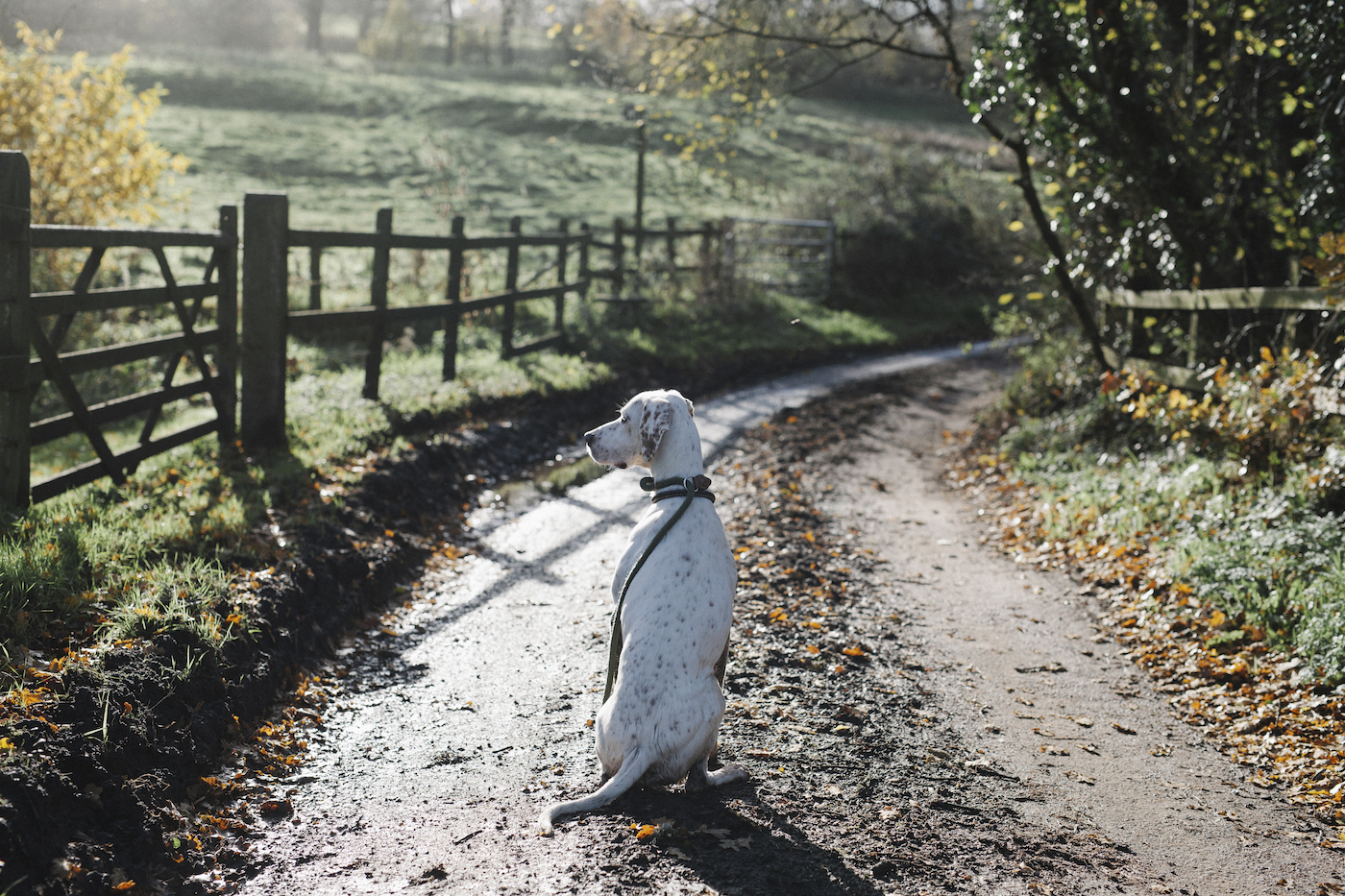
Canine Care Unraveled: Part 1
over the course of the past few months we’re hearing the words
Canine Care come up frequently,
Today we sit down with Jonathan Lawler, also known as The Punk Rock Farmer, to talk about the documentary he’s producing called “Puppy Mill” This documentary is almost completed, and hopefully by the time this is printed, will be out there and available.
Collaboration of: Jonathan Lawler & The Dog Journal
TDJ: Jonathan, this is an exciting one for me, so let’s get started. Can you tell me a bit about yourself and what your introduction is to the dog breeding industry?
JL: I’ve been a farmer all my life, as well as I’m a social media influencer. I got started with TV and media because I had a lot of reporters coming to me and asking me questions about agriculture, and slowly as TV producers wanted to make shows about farming, they would come to me and we would work together. We started out as a large-scale commercial farm, doing a lot of produce, and then in 2015 we started providing food to food banks, community centers, and places that serve the homeless. From 2015 to 2021, we provided around 10 million pounds of produce and around 250,000 pounds of protein to groups like that. That’s actually some of the reason I got started with TV, reporters would come and write stories about what we do.
I got started with dog breeders when a friend of mine, John Bolon, asked me to come speak with him at a fundraising event in Holmes County, Ohio, and that’s when I met my first group of dog breeders.
TDJ: Before you met your first dog breeders, what had been your impression of dog breeders and the dog breeding industry in general?
JL: Negative. It’s funny because prior to getting involved with dog breeders, I had always been a thorn in the side for the same activists’ groups that haunt dog breeders, because of the way they attack the agricultural industry. Being a farmer, it was my job to stand up to them, especially with the platform I had to speak on. The funny thing is, I actually believed the lies they kept telling us about the dog breeding industry. My eyes were opened when I met those first dog breeders, and saw their kennels. The unfair attacks that dog breeders are going through are very similar to every other part of the agricultural industry, and I don’t know why I believed the lies. I guess common sense should have told me better.

TDJ: So, what made you decide to do a documentary on dog breeding?
JL: Well, documentaries are powerful tools, and they can be used over and over again. There are folks that will watch a documentary about a specific subject that was done 10 years ago, and it’s still relevant. We can talk to print media, news reporters, and everyone we can think of, but the thing is, documenting what’s actually happening via video, and using visuals so that people can actually see what’s going on in real life, that’s what it’s all about. Only then will people be able to see first hand that not everything they’ve been told is facts.
TDJ: What does this documentary actually cover, and what is it actually about?
JL: This documentary is designed for people with “confirmation bias.” Confirmation bias is when people are told something that’s not true, and then they’re told the same think over and over, again and again. If you hear a lie long enough, you start to believe it, and that’s confirmation bias. The point of the documentary is to challenge that bias, to give them actual facts. And we’re not just getting facts from dog breeders here, but also from vets, scientists, and from other people working in this industry. This documentary also challenges some of the bias about the Plain Community. The questions I’ve been asked while working on this documentary are astounding! Most people read something online or got to a tourist attraction, and then they believe everything they see there. That’s something we had to unpack as well, so that when people interact with a plain dog breeder, they’re not seeing an Amish dog breeder, they’re seeing him or her as the individual that they actually are, and how hard they’re working to make their kennel better. This documentary will be so good for the good breeders, and very bad for the bad breeders.
This film really is for 80% of the people. This is not for the 10% of the people, the activists, that will choose not to believe the facts. They want to end breeding, and no facts or anything we do will change that. 10% of the people already work in this industry and know that what we have here is the truth. But about eighty percent of the people out there do not know, and that is who this film is for. For them, knowing the truth is so important, and we’re trying to get to them before the animal activists do. If they get to them, and they believe the lies, we’ve lost them. Thant’s the important part.
TDJ: What’s involved in getting a project like this together? I mean, this is a huge project, is it not?
JL: Yes, it’s huge! Initially, we walked into this project blind. We were in Shipshewana, IN sitting around a table, talking with some folks, and that basically gave us the premise of what we were doing. We asked them questions, and took the information they gave us to put together what we thought this project would look like. We thought this is something we could knock out in 6 months, and in turn, what happened was every time we would turn our cameras on and get started, we would unearth more and more details that needed to be told in this documentary. It was so much more complex than we originally thought, and to all of you that are wondering, that’s why it’s taking so much longer than expected. The more we unearthed, the more we needed to unearth. We’ve been working on this film since Oct of 2021.
The Canine Care Certified program was our main focus when we first started out. This was the benchmark, we said, “let’s use the Canine Care Certified program.” About a month ago, as we’re in post-production, we find out that the person that did the main review for CCC was none other than DR Temple Branden, who is a world renown animal welfare person, as well as she’s had several movies made about herself. She’s very well known, and so I went out on a limb, reached out to someone that I know, to see if they could get to her. And she actually called me back directly, and said she would love to be on the film. She travels about 300 days a year, so the first opening she had was towards the end of June. So, we had to actually stop post production until we can get this interview filmed, because this is so important, and will draw so many more people in.
There are three main parts to doing a project like this:
Pre-production: This is doing your research, getting your financing on order, figuring out where you’ll be going, hiring crew members, hiring researchers, etc. The amount of research we had to do I couldn’t all do myself, so we had to hire two people just for researching.
Production: That is the part where you actually do the filming. We’ve done filming in Michigan, Illinois, Indiana, New York, Pennsylvania, Ohio, Arizona, Colorado and all these different places. It’s a lot of work,



this is where we get down in the trenches and do all the leg work.
Post production: We have 7000 minutes of footage to go through. We don’t need to go through this footage once, but time and time again. For example, we fly drones over kennels, etc. to be able to get some really good footage, and just in drone footage alone we have 300 minutes. In the documentary, we’ll probably end up with a minute and a half of drone footage, but we have 300 minutes to go through. The complete documentary will be edited down to 80 to 83 minutes, so that’s a lot of film to go through. Just watching 7000 minutes of film, that’s 116 hours of footage, plus we need to know where to put everything. For example, the one guy that we interviewed, I could make a documentary of just him alone, he was so intelligent about everything. We need to include everyone else and the dogs, though, and quite frankly, we also need to talk about some bad breeders as well. If we just come out and say, there are no bad breeders, nobody will watch or believe this. BTW, this document will be transcribed in 9 different languages.
TDJ: What will something like this cost?
JL: Originally, we had guessed that we’ll spend around $80,000. Beings that it got very complex very quickly, it went well over that. We have been lucky, we’ve had several folks from different states that have helped to fund this project, and I personally have invested well over $50,000. Typically, as the film maker, we don’t put any money into a film, but I believe in this film, even if I don’t get my money back. If it does the justice that I hope it does for the dog breeders, it will mean something.
TDJ: Cool, so all done, the film is complete, now what?
JL: The next step will be distribution and marketing. We will market the film, so that people will know that it’s out there. Documentaries are factual movie, without actors, documenting real life. We have contracts with Amazon Prime, as well as Netflix. Also, we have an agreement with Facebook Watch, so that anyone with a Facebook account, (and that’s close to 1.5 billion people) can watch the documentary for free. We will also put it on YouTube, and we’re actually going to make it available to any legislators or legislative body that’s wants to use it as a learning tool. We have trailers out there already, and everyone (with the exception of animal activists) has been very excited about it. I had someone from the Sportsman Alliance watch the trailer and he said “this looks like this will be exactly what we need.” Folks from Protect the Harvest, the state breeder groups, vets, and pet stores love this.
TDJ: This is really great, Jonathon, anything else you would like to add before we end this?
JL: I want to add, that although a lot of people want this to come out now, so do we. Most film projects, never come out on schedule. We’ve had so much new information come out that we’re like “wow, we had no idea this was happening, and we needed to make sure we included it all.” If you’re wondering when it will come out, it will be this summer. We have a few more interviews to do, in fact, our last two interviews are being done on the same day, one in Indiana, and one in Colorado. We need to have crews in two different parts of the country, that’s how important these are. Once we have these last two interviews, things will start coming together really quickly. We’re already working with marketing and distribution, so it will be done soon.
Jonathan, thank you so much for your time, and for supporting The Dog Journal! Very excited to see this documentary, and thanks for your dedication and hard work.

over the course of the past few months we’re hearing the words
Canine Care come up frequently,

The group at PAWS has officially launched the long awaited and worked on Kennel Assistance Program, also known as K.A.P. This program was designed for breeders by breeders, for the simple mission of helping each other improve the industry and public perception of dog breeding one breeder at a time. Here’s the cool part, it doesn’t cost you as a breeder anything to participate, and you don’t even need to be a PAWS member.

The Dog Journal Canine Care: Part Three Hello from Perfect Match Poodles. This is the story of our experience with the Canine Care Certified program.